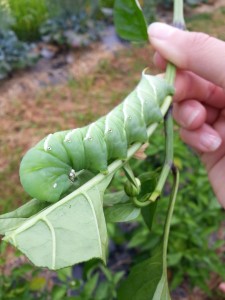
As you can see in this photo, these worms can reach great lengths. This one was just over 3 inches once we got him stretched out. He was a bit agitated in this photo so it doesn’t show his true length.

The tomato horn worm is originally found in tomatoes.

We just happened to find this guy munching on some pepper plant leaves.

